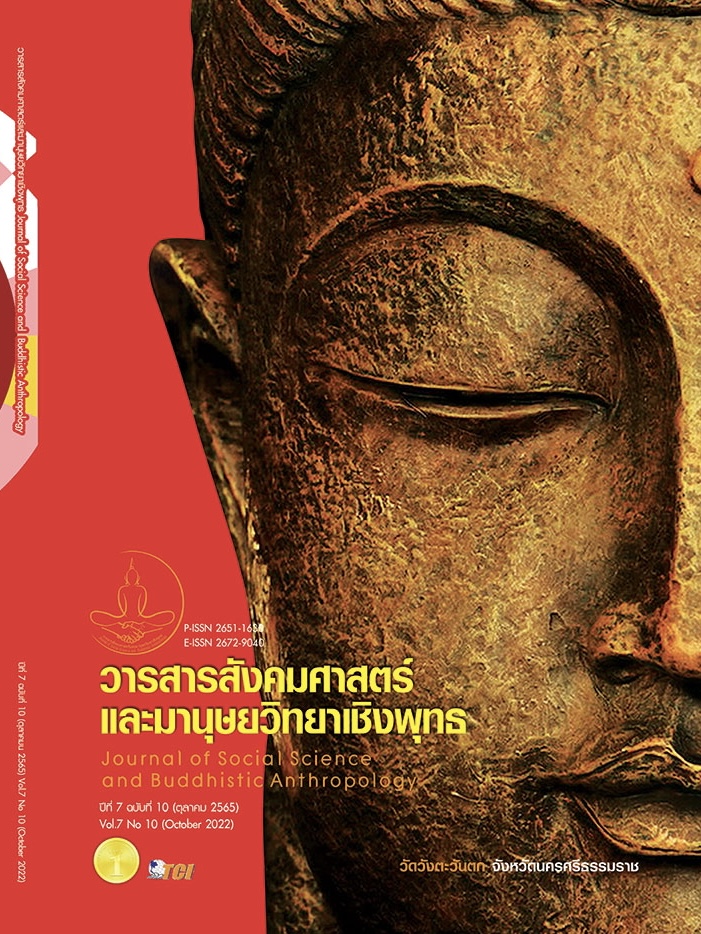SEEKING IDEAS FOR THE DEVELOPMENT OF ELEPHANT TOURISM DESTINATION IN THAILAND TO CREATE VALUE FOR TOURISM ACTIVITIES
Keywords:
Elephant Tourism, Elephant Tourism Destination, Create Value for Tourism ActivitiesAbstract
Elephant tourism in many countries including Thailand is experiencing a bad image in using elephants for tourism by trying to train and control the elephants to offer entertainment to tourists mainly. As the result, tourists may encounter inappropriate images such as animal cruelty. Elephant tourism destination have always tried to find a solution, especially the cancellation of activities that are seen as animal cruelty such as elephant riding, elephant shows and try to free the elephants live naturally within the tourist attraction, but cannot support tourists who want to travel activities that used to be. Searching ideas for development of elephant tourism destination should study the development of value for tourism activities in order to accommodate all groups of tourists. Especially elephants are wild animals, tourism activities must take to consider the natural behavior of elephants. Until the concept of creating destination fascination is found in 6 dimensions, which can be applied to develop the value in elephant tourism activities and linked to the natural behavior of elephants. which tourism activities should have 1) Mystery, charm, interesting stories of tourist attractions 2) Abundance of resources, diversity of resources that elephants need 3) Attractiveness desired by tourists 4) The uniqueness of the elephants 5) Appropriate fit and compatibility between elephant tourism destination and tourism activities 6) Friendliness of the attraction where tourists can still interact with elephants through tourism activities. This concept will introduce ways to develop the value for existing tourism activities, to be able to accommodate all groups of tourists and for the survival of the elephants.
References
กรมการท่องเที่ยว. (2556). พิธีมอบเครื่องหมายรับรองมาตรฐานการท่องเที่ยว ประจำปี พ.ศ. 2555 - 2556. กรุงเทพมหานคร: กระทรวงการท่องเที่ยวและกีฬา.
สถาบันคชบาลแห่งชาติในพระอุปถัมภ์ฯ. (2561). โครงการ “การประชุมช้างแห่งชาติ ประจำปี 2561” วันที่ 2 - 3 สิงหาคม 2561. เรียกใช้เมื่อ 31 สิงหาคม 2562 จาก https://shorturl.asia/pVUgW
สำนักควบคุม ป้องกัน และบำบัดโรคสัตว์. (2552). รายชื่อปางช้างในประเทศไทย. เรียกใช้เมื่อ 17 สิงหาคม 2562 จาก https://dld.go.th/th/index.php/th/
Animals, M. (2019). Daily Mail online. Retrieved August 17, 2019, from www.dailymail.co.uk
Buhalis, D. (2000). Marketing the competitive destination of the future. Tourism management, 21(1), 97-116.
Chen, P. J. & Kerstetter, D. L. (1999). International students’ image of rural Pennsylvania as a travel destination. Journal of travel research, 37(3), 256-266.
Cohen, E. (2009). The wild and the humanized: Animals in Thai tourism. Anatolia, 20(1), 100-118.
Cohen, E. (2015). Young elephants in Thai tourism: A fatal attraction. Animals and tourism: Understanding diverse relationships, 34(2), 163-177.
Collier, A. & Harraway, S. (1997). Tourism Industry Principles of Tourism. Auckland: Longman Paul Ltd.
Dickman, C. R. (1996). Impact of exotic generalist predators on the native fauna of Australia. Wildlife Biology, 2(3), 185-195.
Dissanayake, D. M. M. I. (2016). Promoting Elephant Friendly Tourism in Sri Lanka. In Anura Manatunga, K.A.T. Chamara, Thilina Wickramaarachchi and Harini Navoda de Zoysa (Eds.), International Conference on Asian Elephants in Culture & Nature, 20th - 21st August 2016 (pp. 170-180). Sri Lanka: Centre for Asian Studies, University of Kelaniya, Sri Lanka.
Echtner, C. M. & Ritchie, J. B. (1993). The measurement of destination image: An empirical assessment. Journal of travel research, 31(4), 3-13.
Kachel, U. E. (2018). Sense-and decision-making in online discussions: To ride or not to ride an elephant in Thailand. 28th Annual CAUTHE Conference : Get Smart: Paradoxes and Possibilities in Tourism, Hospitality and Events Education and Research - University of Newcastle, Newcastle, Australia, 12(1), 777-780.
Kaplan, S. (1995). The restorative benefits of nature: Toward an integrative framework. Journal of environmental psychology, 15(3), 169-182.
Kim, S.-H. et al. (2009). Structural relationships among involvement, destination brand equity, satisfaction and destination visit intentions: The case of Japanese outbound travelers. Journal of Vacation Marketing, 15(4), 349-365.
Learmonth, M. J. (2020). Human-Animal Interactions in Zoos: What Can Compassionate Conservation, Conservation Welfare and Duty of Care Tell Us about the Ethics of Interacting, and Avoiding Unintended Consequences? Animals, 10(11), 1-14.
Liu, C.-R. et al. (2017). Destination fascination: Conceptualization and scale development. Tourism management, 63(1), 255-267.
Morrison, A. M. (2013). Marketing and managing tourism destinations. London: Routledge.
Sirgy, M. J. & Su, C. (2000). Destination image, self-congruity, and travel behavior: Toward an integrative model. Journal of travel research, 38(4), 340-352.
Srinok, N. (2020). Marketing communication tools for elephant camp business a case study of Ayutthaya elephant palace & royal kraal. In Mastar of Arts (Marketing Communications). Rajamangala University of Technology Phra Nakhon.
Stokburger-Sauer, N. E. (2011). The relevance of visitors’ nation brand embeddedness and personality congruence for nation brand identification, visit intentions and advocacy. Tourism management, 32(6), 1282-1289.
World Animal Protection. (2014). Checking out of cruelty. World Animal Protection. Company Limited by Guarantee in England and Wales, Registration No. 4029540. Registered Charity 1081849. Retrieved March 27, 2019, from www.worldanimalprotection.org/tourismguide
Downloads
Published
How to Cite
Issue
Section
License
Copyright (c) 2022 Journal of Social Science and Buddhistic Anthropology

This work is licensed under a Creative Commons Attribution-NonCommercial-NoDerivatives 4.0 International License.








